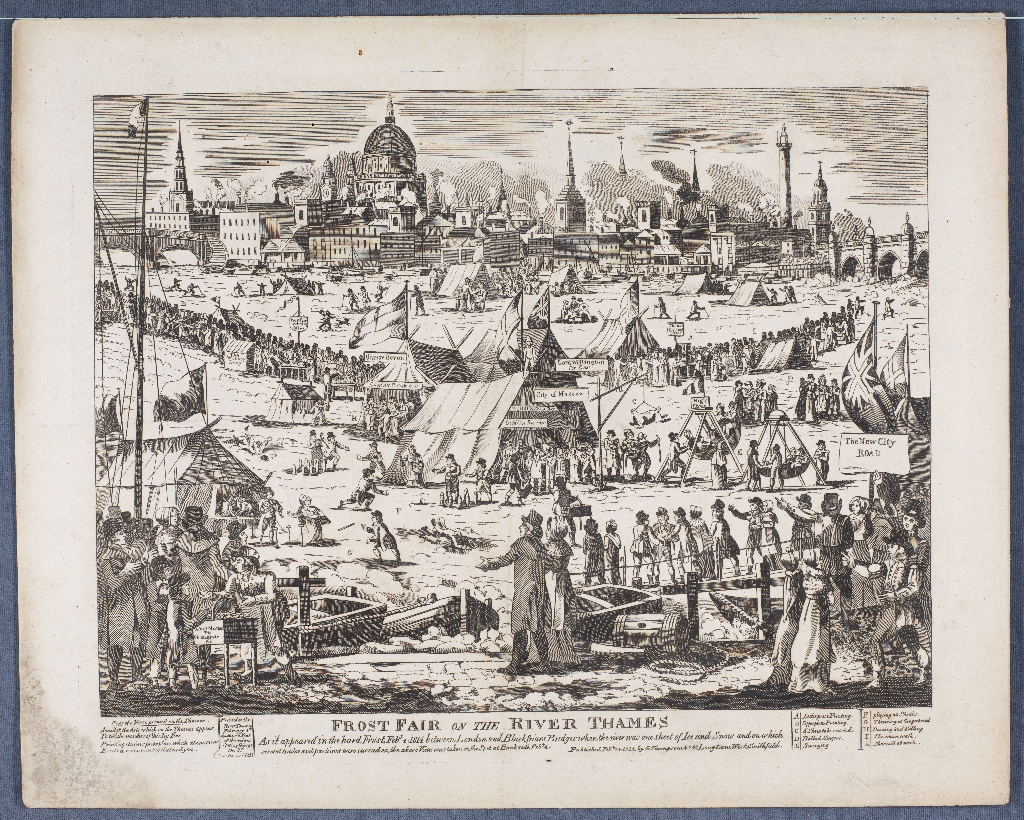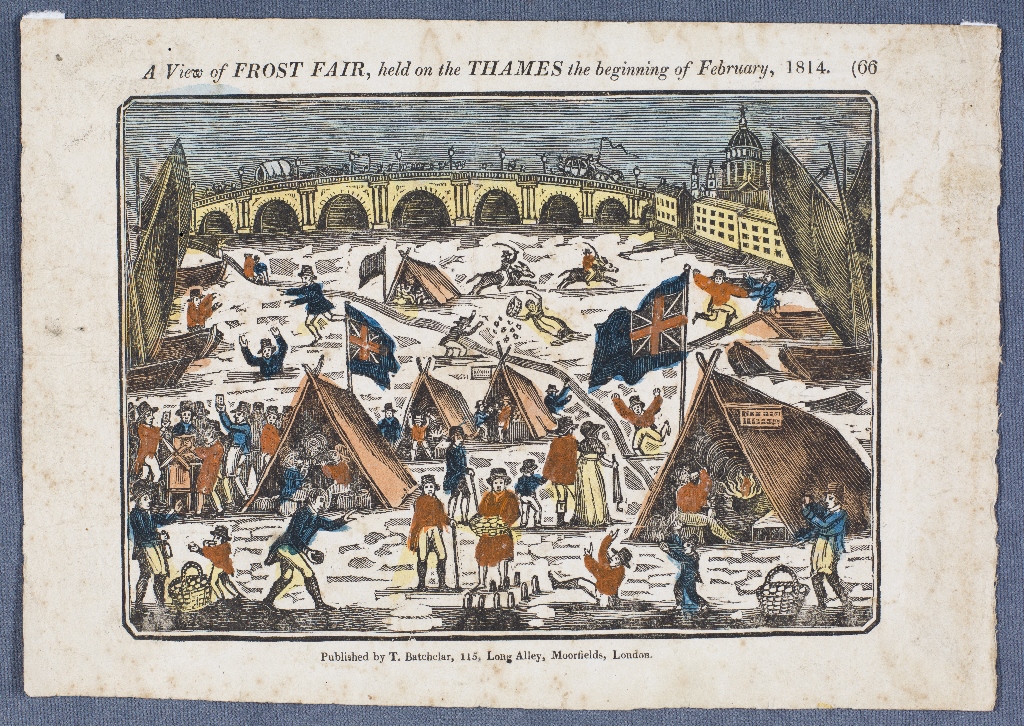

“Two designs placed side by side, the title so arranged that ‘The Contrast’ applies to both, the first four and last two words to the two designs respectively. [1] A scene outside Jaffa where the French flag flies from a fort on a rock at whose base are hospital tents (left), in which the sick can be seen. In the foreground Napoleon (a poor portrait) points with an imperious gesture to a bottle of ‘Opium’ in the hand of a distressed doctor in civilian dress. He says: “Don’t talk to me of Humanity & the feelings of a generous heart, I say Poison those Sick dogs they are a burthen to me, & can no longer fight my Battles!!! I say destroy them – As for those Turks, them up in the Garrison, turn all the Guns upon them, Men, Women, & Children & blow them to atoms, they are too bold & resolute for me to suffer them to live, they are in my Way.” In the middle distance (left) is a body of Turks, their arms tied behind them, guarded by a French soldier who points at Napoleon. Behind Napoleon two French officers exchange glances, acutely dismayed at the orders.” … [2] Two black soldiers, in neat regimentals, prepare to kill three haggard French officers. One raises an axe to smite a bound prisoner. Two British officers (left) interpose with outstretched arms; one says: “We know they are our Enemies, & yours, & the Enemies of all Mankind, nevertheless Humanity is so strongly planted in the Breast of an Englisman [sic], that he can become an humble beggar, for the lives, even of his enemies, when they are subdued.” The other adds: “A mercy unexpected, undeserved surprises more.”–British Museum online catalogue.
On the verso are newspaper clippings on a variety of topics: Sir Lionel Darell and the benevolence of the King to grant him land for his greenhouses in Richmond Park; “Observations on the rot of sheep”; Poem entitled “Leamington Spa”; “Balloon Ascension” an extract from a letter from Bristol, dated Sept 26.; an report of the death of Simon Southward, a miller who was a prisoner for 43 years for debt and the delusion of being the Earl of Derby.
- Printmaker: Williams, Charles, active 1797-1830, printmaker.
- Title: French alias Corsican villainy, or, The contrast to English humanity [graphic].
- Publication: [London] : Pubd. Jany. 13, 1804, by S.W. Fores, No. 50 Piccadilly, [13 January 1804]
804.01.13.01+
Acquired February 2024




